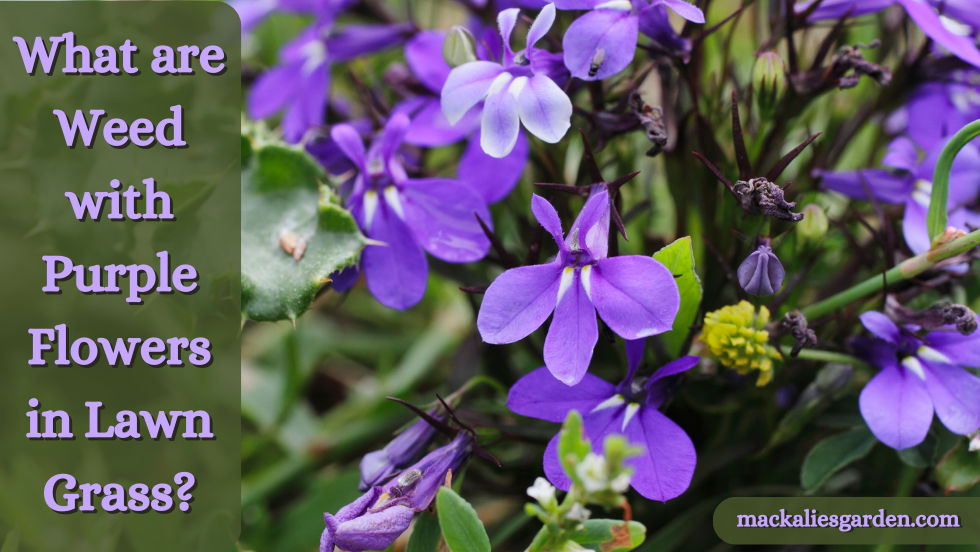If you’re an avid gardener or landscaper, you know that weeds can be a significant nuisance. They often feel like unwanted guests in our gardens as they crowd out other, more desirable plants. But what if those pesky little intruders had something special about them?
What if they bore purple flowers in your grass and made your yard all the more aesthetically pleasing? Believe it or not, some common weeds come with purple flowers that can provide color variety and depth for any garden plot! Below are eleven of the most popular weed species known to grow unruly purple blossoms. Be sure to read up on each one before venturing into weeding duties.
Common weed with Purple Flowers Weed in Lawn
Here is a comprehensive list of 11 common weeds with beautiful purple flowers, complete with their scientific names, native regions, standout characteristics, and unique uses:
1] Ground Ivy (Glechoma Hederacea)
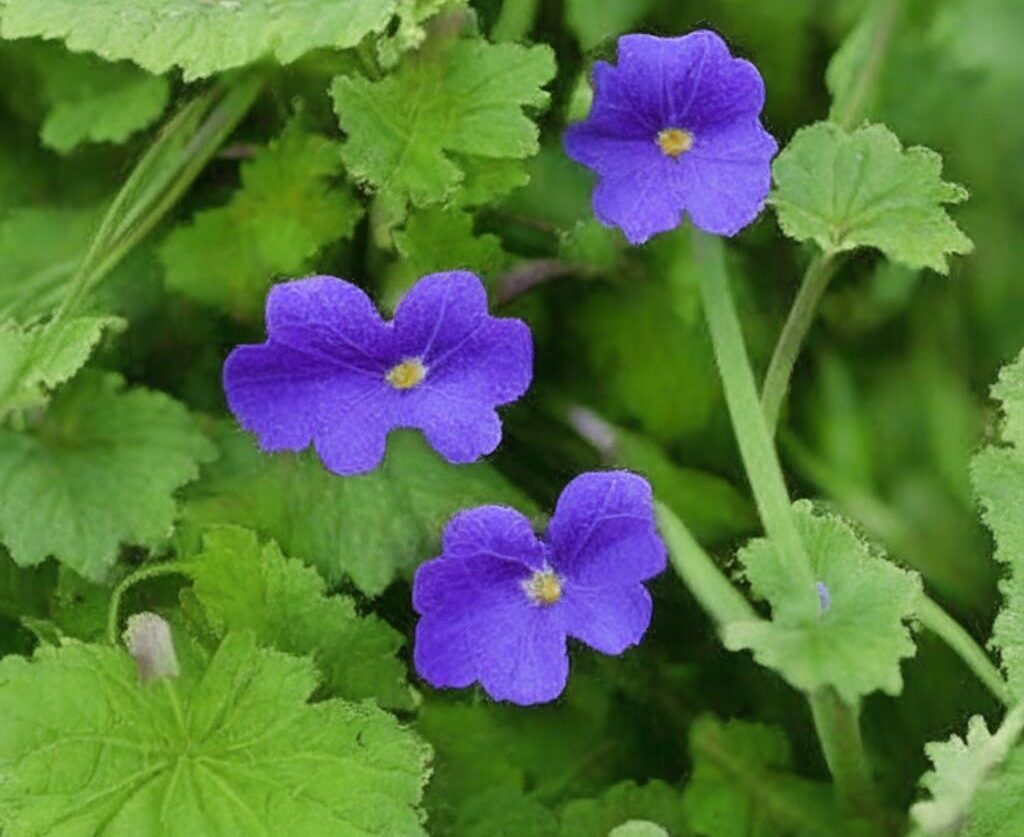
- Native to: Europe and Asia
- Standout characteristics: This weed has a square stem and kidney-shaped leaves with scalloped edges.
- Uses: Ground Ivy has been used traditionally for medicinal purposes, such as treating respiratory issues and inflammation.
2] Wild Violet (Viola Sororia)
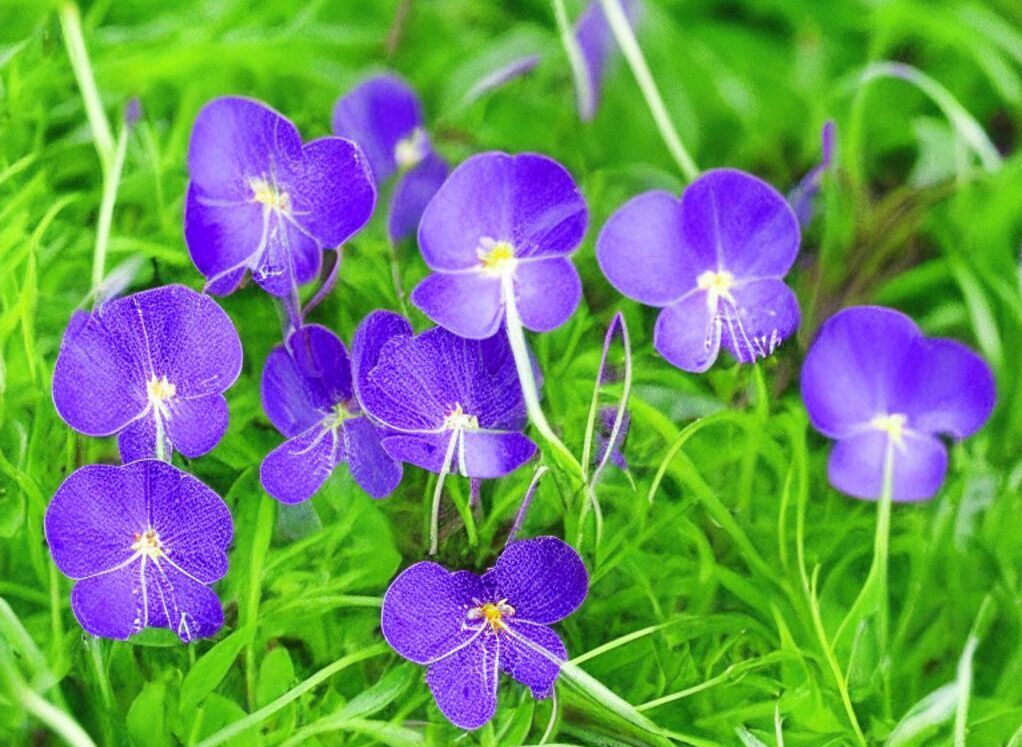
- Native to: Eastern North America
- Standout characteristics: Known for its heart-shaped leaves and five-petaled purple flowers.
- Uses: The flowers and young leaves are edible and can be added to salads, providing a unique flavor and color.
3] Purple Dead Nettle (Lamium Purpureum)

- Native to: Eurasia
- Standout characteristics: Boasts triangular leaves and small purple flowers.
- Uses: This weed has several medicinal benefits, including treating allergies, inflammation, and mild pain.
4] Black Nightshade (Solanum Nigrum)
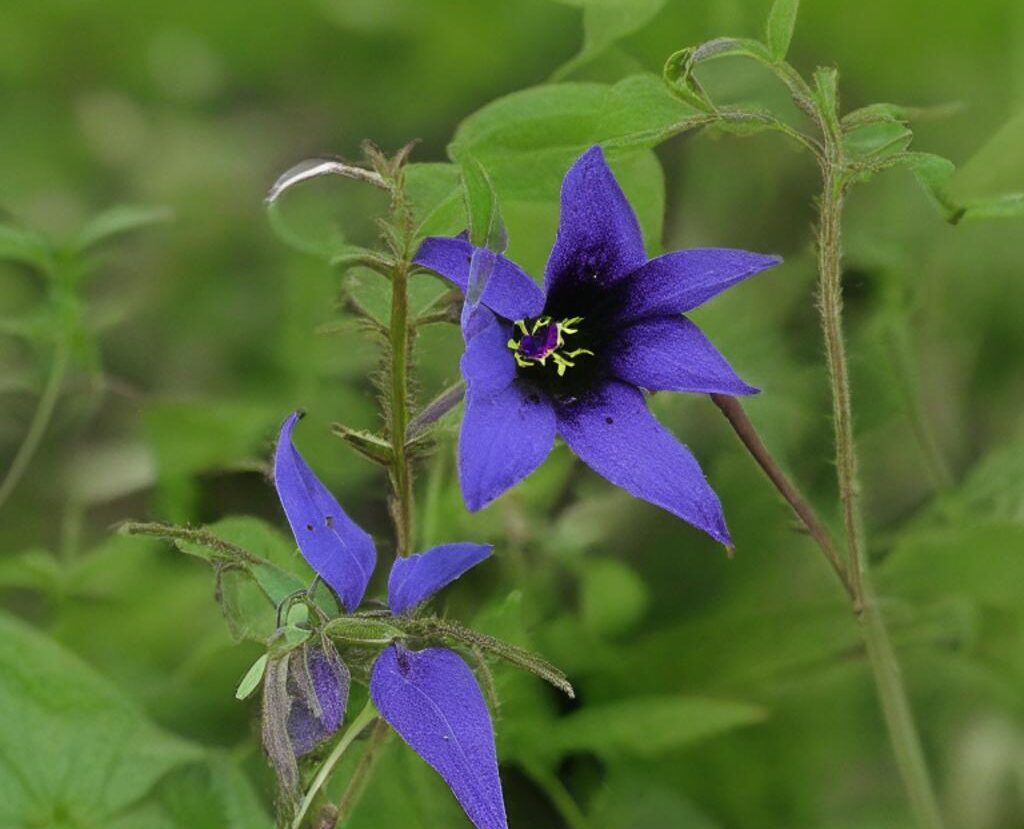
- Native to: Eurasia
- Standout characteristics: Distinguished by its deeply lobed leaves and star-shaped purple flowers.
- Uses: While its berries are toxic, cooked young leaves can be consumed as a spinach substitute in some cultures.
5] Canada Thistle (Cirsium Arvense)
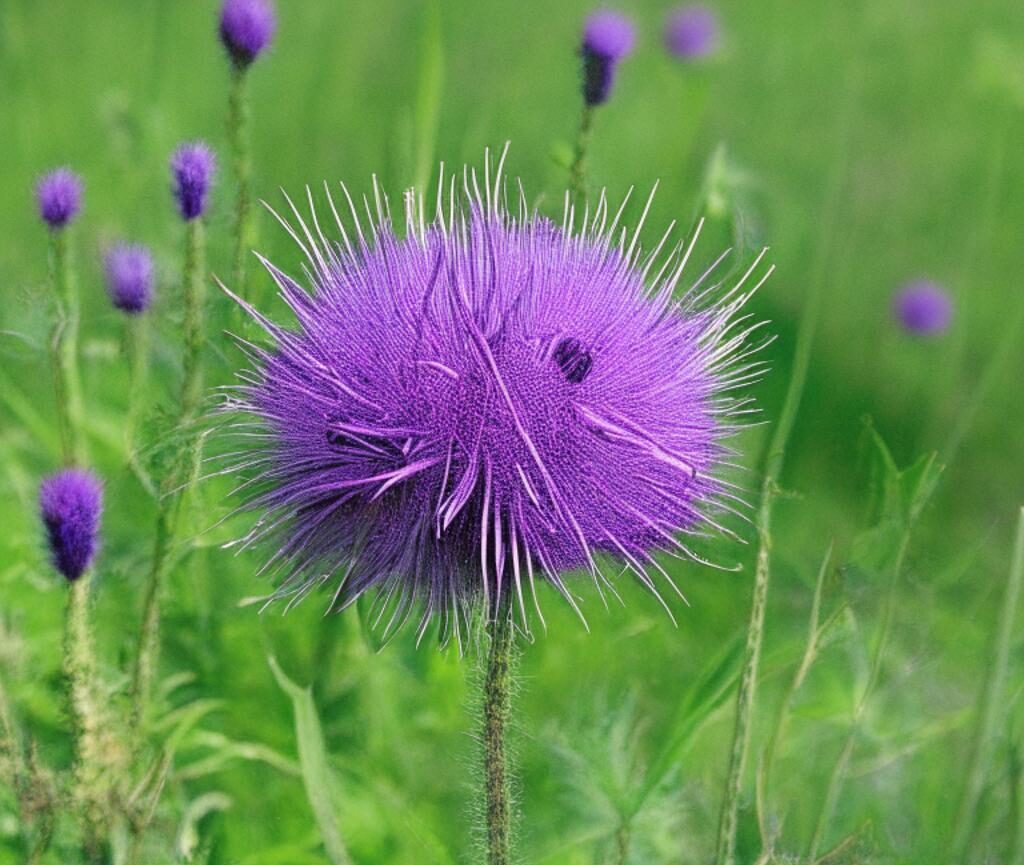
- Native to: Europe and Asia
- Standout characteristics: Displays spiny, lobed leaves and purple, brush-like flowers.
- Uses: The roots can be cooked and consumed similarly to Jerusalem artichokes. The young shoots are also edible when cooked.
6] Common Thistle (Cirsium Vulgare)
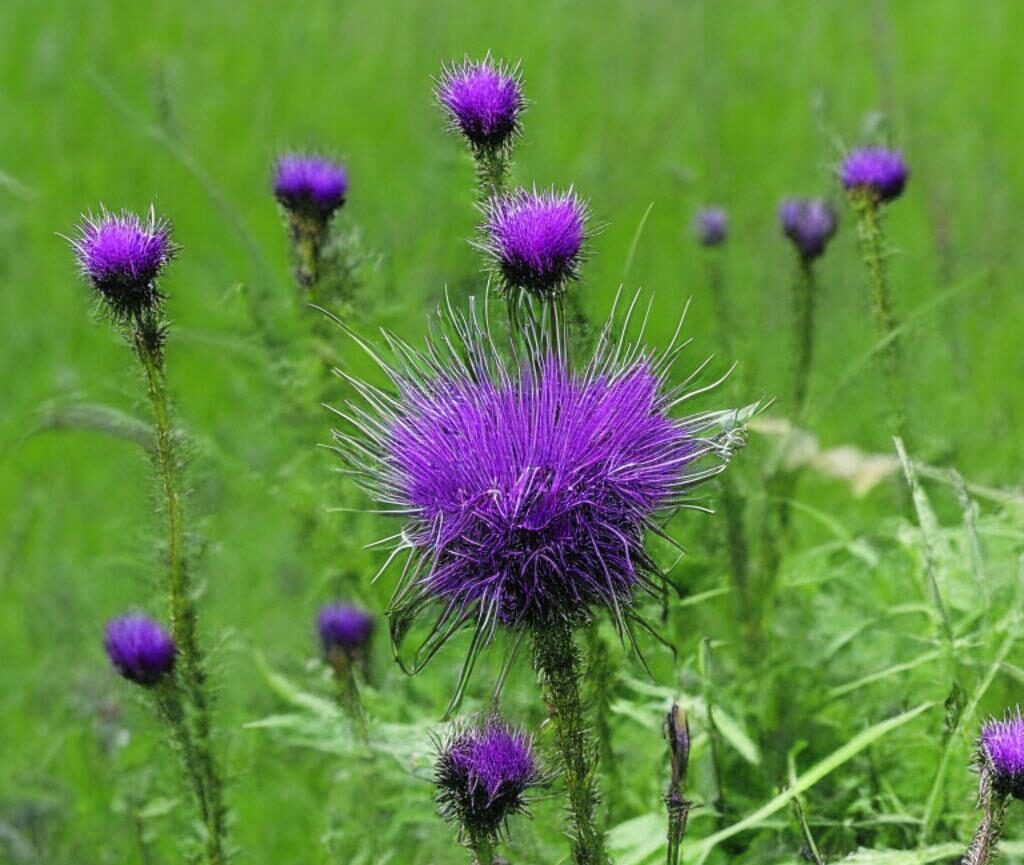
- Native to: Europe
- Standout characteristics: Features spiny, oblong leaves and a spherical flower head with purple florets.
- Uses: The leaves and flower buds can be boiled and eaten, while the stem’s peeled interior can be consumed raw or cooked.
7] Dovesfoot Geranium (Geranium Molle)
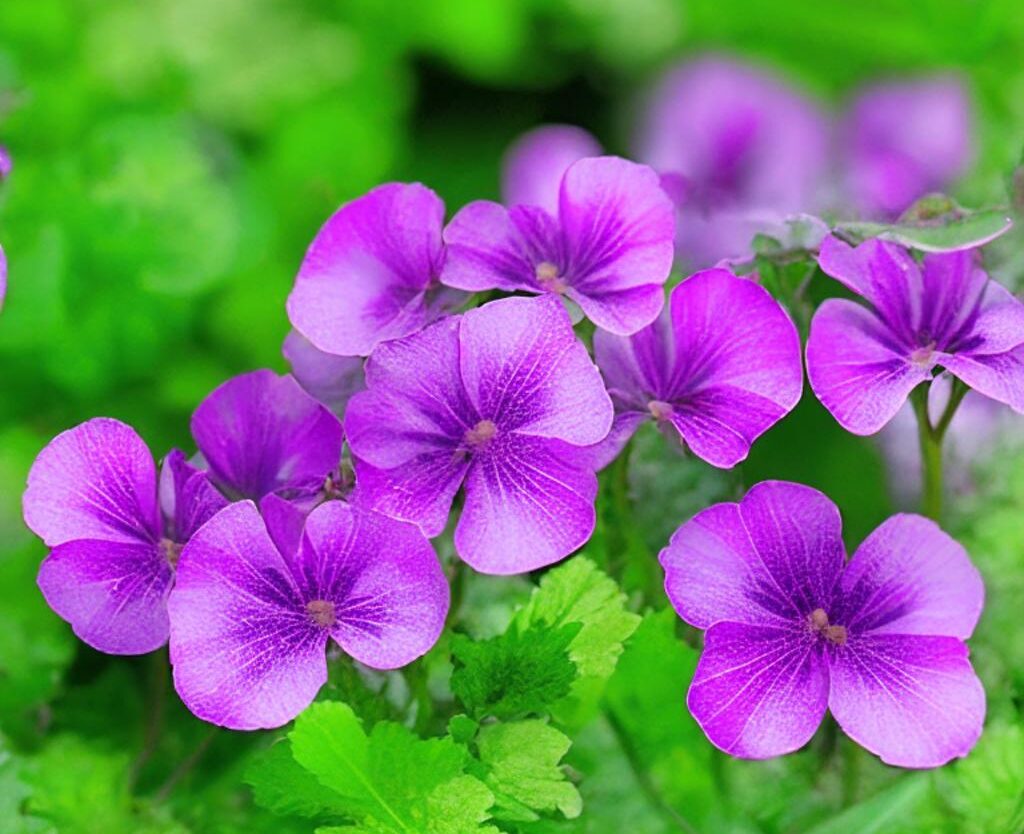
- Native to: Europe
- Standout characteristics: Characterized by its deeply dissected leaves and small, five-petaled purple flowers.
- Uses: Utilized as a ground cover in gardens due to its aesthetic appeal and hardiness.
8] Wood Forget-Me-Not (Myosotis Sylvatica)
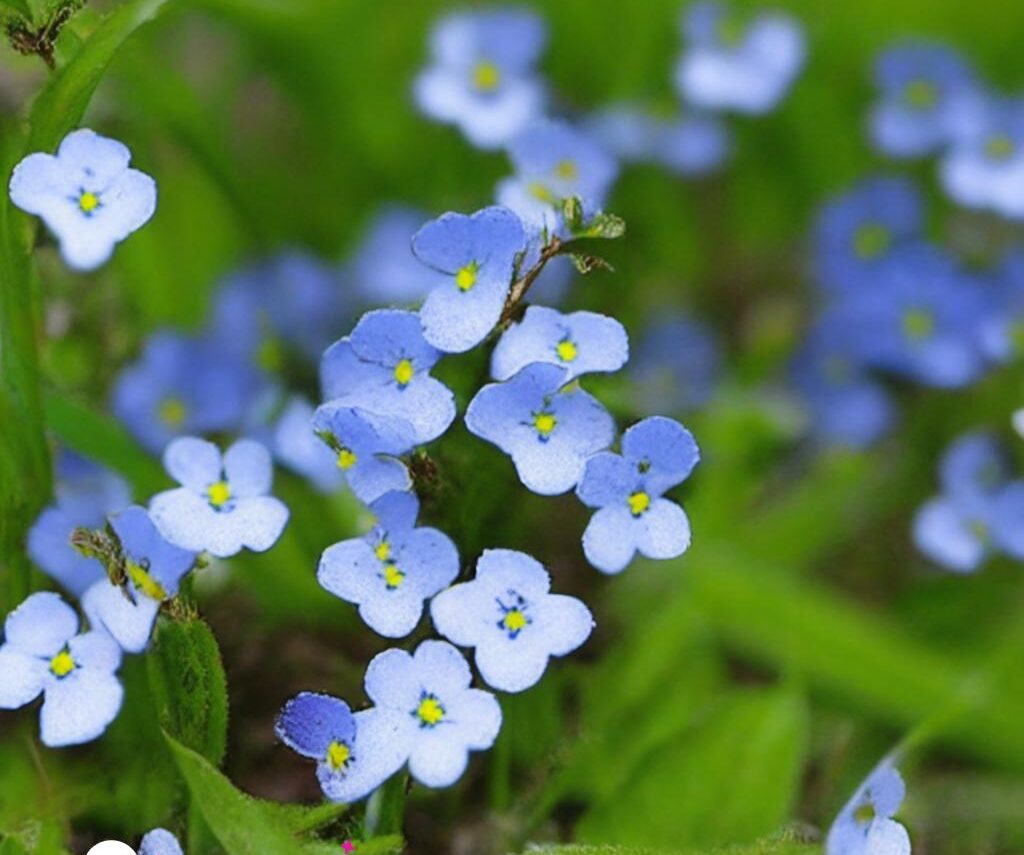
- Native to: Europe
- Standout characteristics: Showcases tiny, five-petaled purple flowers with a yellow center and hairy leaves.
- Uses: Often used in wildflower gardens and natural landscaping, this weed adds color and beauty to any setting.
9] Henbit Deadnettle (Lamium Amplexicaule)
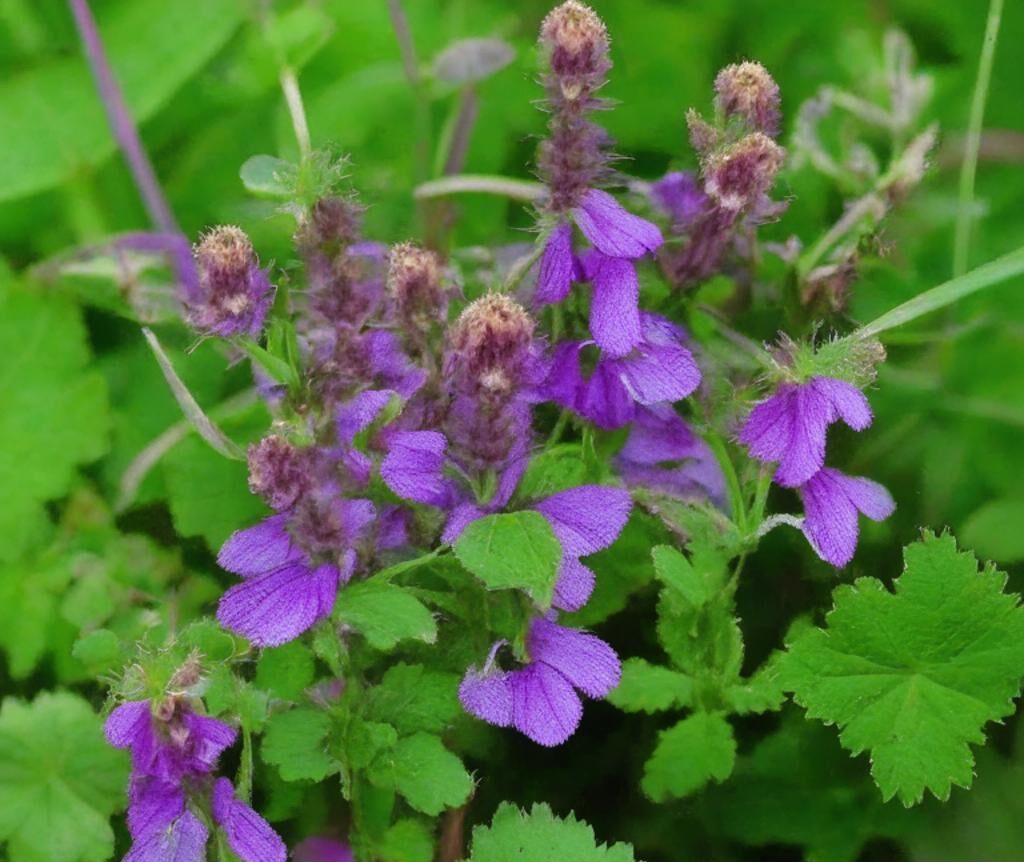
- Native to: Asia and Europe
- Standout characteristics: Easily recognized by its distinctive, rounded, clamshell-like leaves that clasp a square stem and pinkish-purple flowers.
- Uses: Its leaves and flowers are edible and can be added to salads or used as a garnish.
10] Musk Thistle (Carduus Nutans)
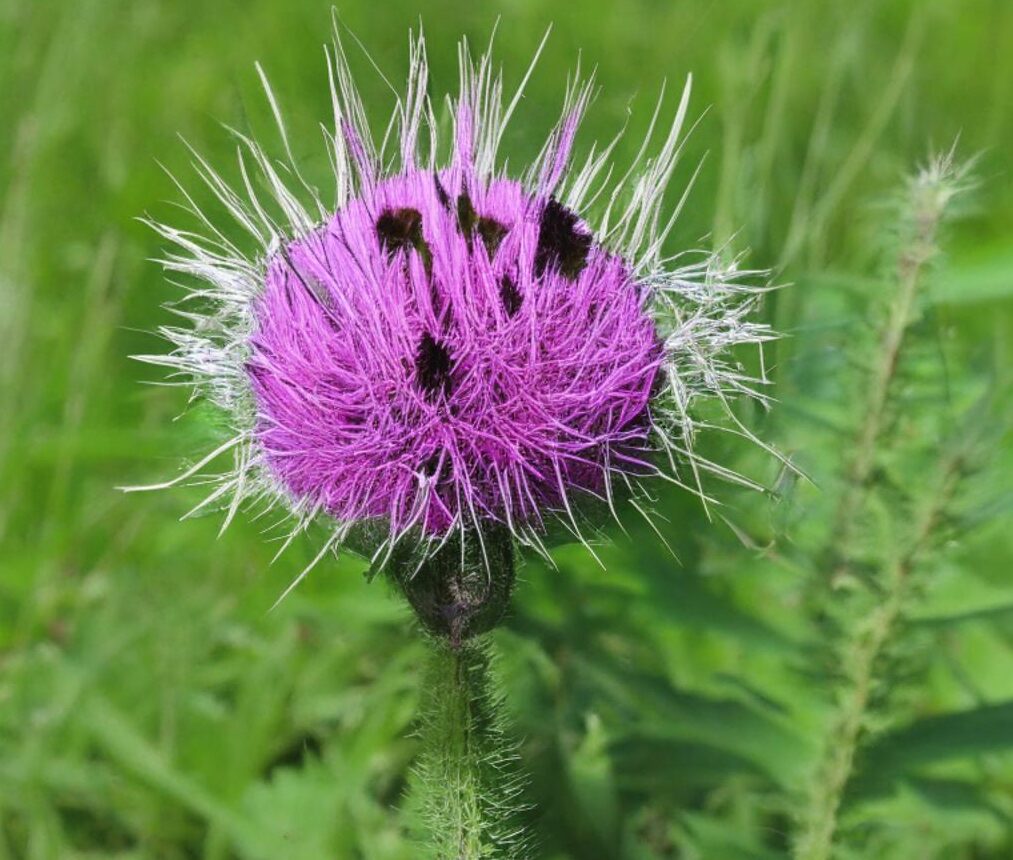
- Native to: Europe, Asia, and Africa
- Standout characteristics: Characterized by its large, nodding, thistle-like purple flowers and spiny leaves.
- Uses: Its flowers and stems can be eaten after removing their prickles. Additionally, its seeds can be toasted and eaten.
11] Creeping Bellflower (Campanula Rapunculoides)
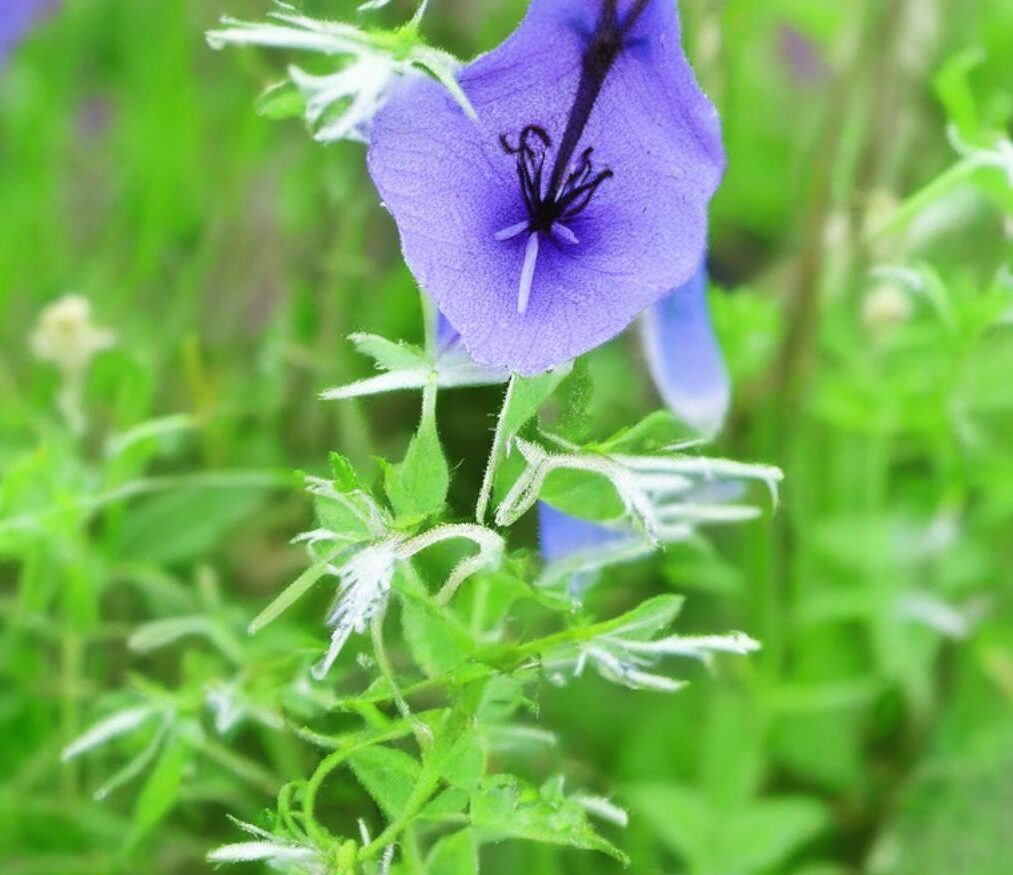
- Native to: Europe and Asia
- Standout characteristics: This weed has small, star-shaped blue-purple flowers with five petals and narrow leaves.
- Uses: Its flowers attract bees and other pollinators, making it a beneficial addition to gardens. Additionally, its leaves are edible and can be used in salads.
Therefore, these 11 common weeds with beautiful purple flowers offer interesting uses ranging from medicinal purposes to culinary delights. Not only do they provide aesthetic beauty but also potential nutritional benefits! Whether you want to add some color to your garden or make the most of these weeds’ unique properties, there is something for everyone to enjoy.
So look at the list above and identify which weeds could bring beauty to your outdoor area! With a bit of research and diligence, you can create an aesthetically pleasing yet functional landscape that can benefit you and the environment.
Final Thoughts
Purple flowering weed species can be a great addition to landscaping or gardening projects. These flowers provide much-needed color variety while offering potential medicinal and culinary uses. With the right research and careful attention to detail, these purple blooms can turn your garden into a beautiful oasis. So be sure to explore this list of common weeds with purple flowers and make the most of them.

Douglas Mackalie is a Founder of Mackalies Garden. He is one of the most exciting people you’ll ever meet. He has 25 years of experience in horticulture and gardening, most of which he’s spent outdoors getting his hands dirty.

